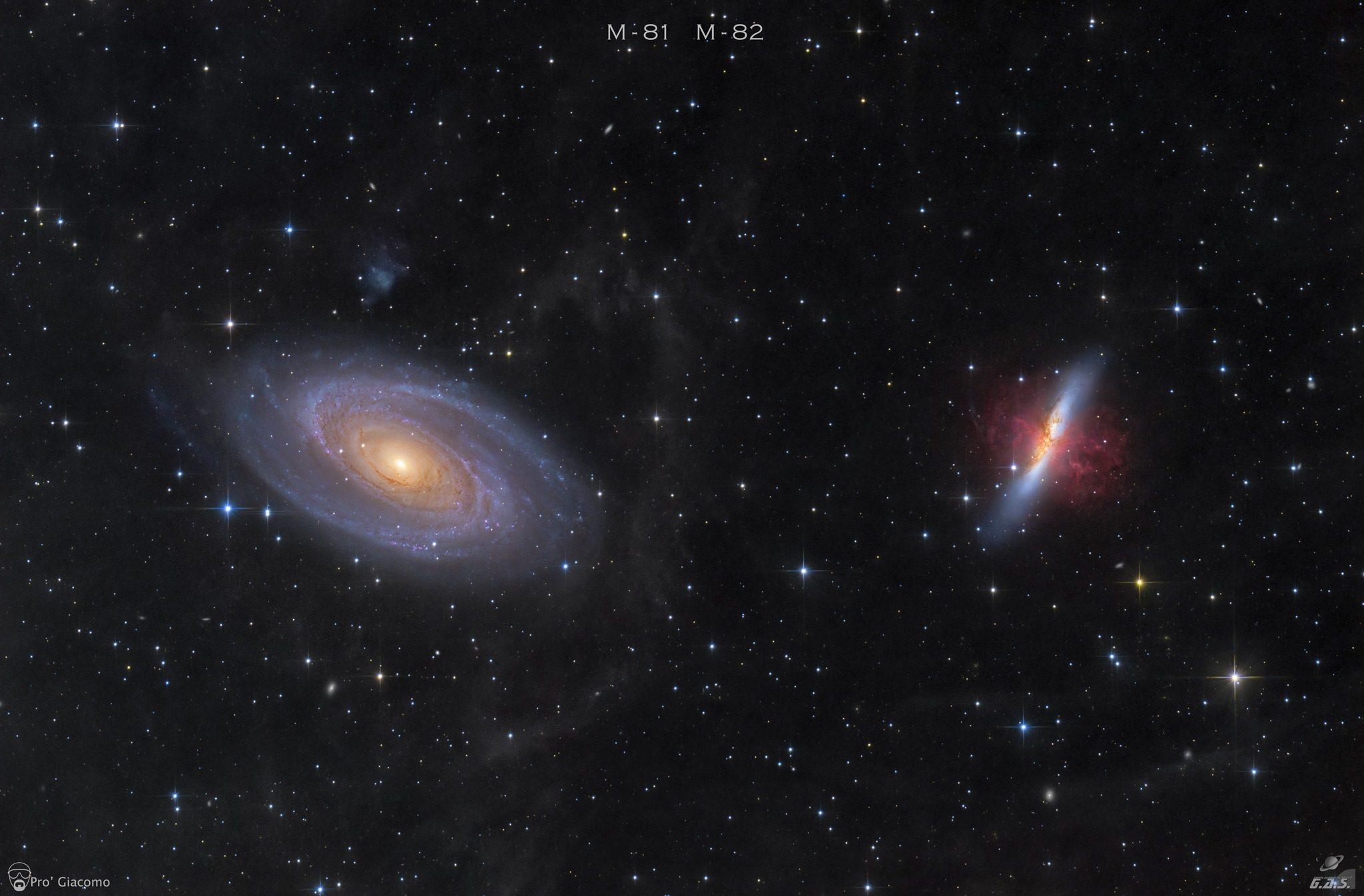M81 and M82 + Giacomo Pro + Optolong UV/IR Cut
M81 and M82 + Giacomo Pro + Optolong UV/IR Cut
Credit: Giacomo Pro (Italy)
M81 and m82 are the most important members of a group of galaxies called m81 galaxies. The group has 34 galaxies, all located in the constellation of the major bear, about 11.7 million light years away on average from our solar system, making it one of the closest groups of galaxies to our local group. M81 and m82 have now been separated by about 300,000 light years, but 250 million years ago there was a meeting between the two galaxies, and a large amount of gas spilled over m82, particularly into its central regions. This interaction led to a sharp increase in star formation in both galaxies. M81 still deforms m82 and greatly increases star formation phenomena, making it a starburst galaxy, causing star superclusters to form. M81 is also known as the bode galaxy or NGC 3031, it is a fairly bright spiral galaxy, under dark skies it can be traced with a 10x50 binoculars, with a telescope of at least 150mm opening you can see the structure of its nucleus. Its very northern declination makes it circumpolar for most of the boreal hemisphere. The best period for your observation is January to August. It was first observed in 1774 by johann elert bode, whose name it comes from, and then in 1781 Charles messier put it in his catalogue, describing it as "nebulous, slightly oval, brighter shell in the middle ". M82 also known as the "sigaro galaxy" or NGC 3034 is a galaxy as active as its partner m81, this galaxy reveals a powerful magnetic field and is a source of intense radio waves. In its center, a massive explosion has now been going on for 1.5 million years, with fragments of glowing matter moving away from the galactic nucleus at a thousand kilometers per second, and the mass involved in the explosion is five million alone. It was also discovered by bode in 1774 and Charles messier described it as "nebulous and insoluble object in stars."
Light 115 x 300” filter: Optolong Astronomy Filter UV/IR cut
Camera: ZWO Astronomy Cameras Asi 294 mc Pro
Telescope: GSO 200/800 f/4 + coma corrector 1X
Guide camera: Asi 120 mini
Guide scope: 50-250mm
Mount: Skywatcher Eq 6-r Pro
Acquisition: ZWO ASIAIR Plus
Software: DSS - Pixinsight – Photoshop
Shots:
17-18/03/2023 Stigliano (MT), Italy
Author: PRO’ GIACOMO
Hope you like it.





